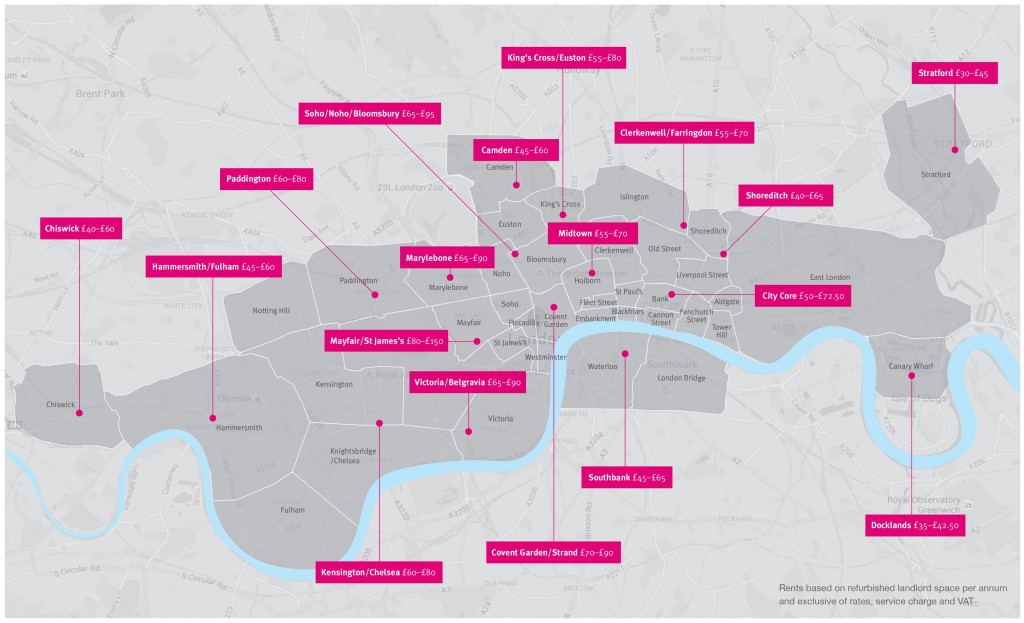Everyone looking for a new office imagines setting up in an exclusive neighborhood in an expensive city such as London. But when it comes to prioritizing expenses, office rent is often cut to the bone by executives trying to preserve the bottom line, so companies then ‘settle’ for less desirable or accessible locations. If you’re looking to rent in an expensive area, then ask yourself, what’s better? A small space in the heart of the city close to clients in a desirable area or a large office on the fringe? Renting in an upmarket area doesn’t have to be difficult, and that dream location can be a reality with the right attitude and some handy tips to maximize space and secure a bargain.
Make sure the price is right
Most importantly, it’s key to shop around and hunt out the right deal. Take London, one of the most expensive cities in the world when it comes to renting office space, and one of their most exclusive suburbs. Is renting an office in Belgravia difficult? Is it out of the range of most smaller businesses? Not necessarily. While average prices for West London boroughs range from £65 to £77.50, rental agents The Workplace Company frequently let A-grade office space with a much lower cost per square foot. If you end up renting an expensive office space in the heart of the city, but can no longer afford to take clients out for lunch during meetings, is it worth it? Cutting down on expenses can be risky; therefore, speaking with your accountant and compiling heavily detailed spreadsheets recording your costs is optimal in your decision-making process.
Office rental prices in Central London (click on the image to enlarge)
Cut the in-house workforce
The daily commute to an office is becoming less prolific, and according to the latest statistics, more than 4 million Britons work from home. This is more flexible for many workers, particularly those with dependents or a long commute, and is a great space and money saver when it comes to working out office space. Having a rotation where certain staff members come in once or twice a week and hotdesk means that you can have face-to-face time with all employees without the costly rent. Offering employees the chance to work from home also gives you a wider talent pool to draw from, and you can hire staff from a different city or even country, where they may not need high wages to compensate for expensive living costs.
Additionally, you could have the best of both worlds and hire freelancers for certain elements of your company, such as graphic designers or content writers. Therefore, you could afford a smaller space in the city; limiting the in-house employee’s commute. After all, smaller space is more cost effective, and a larger space would not be needed.
Make it modern
Many offices are still set up as though it’s the 1980’s, with large desks for hefty desktops and shelves and cabinets for endless documents. Now, offices can easily scan and email most paperwork, including contracts, so there’s no need for folders full of papers. Try not to rely on paper, as over time it’s costly, bulky, and worse for the environment than storing scanned documents digitally.
The old L-shaped tables are also relics of the past. Use smaller desks that simply fit a laptop and have open spaces instead of cubicles to make the room feel larger and more airy. There’s no need for dividers or cubicles, unless it’s to block out the noise of the sales team; additionally, an open planned office space could be great for boosting moral.
As businesses continue to grow, particularly in London, companies will continue scrambling for what little office space is available in their location of choice. Renting in upmarket areas, even Belgravia, doesn’t have to be difficult – it just takes flexibility, perseverance, and the ability to hunt out a bargain and prioritize.



